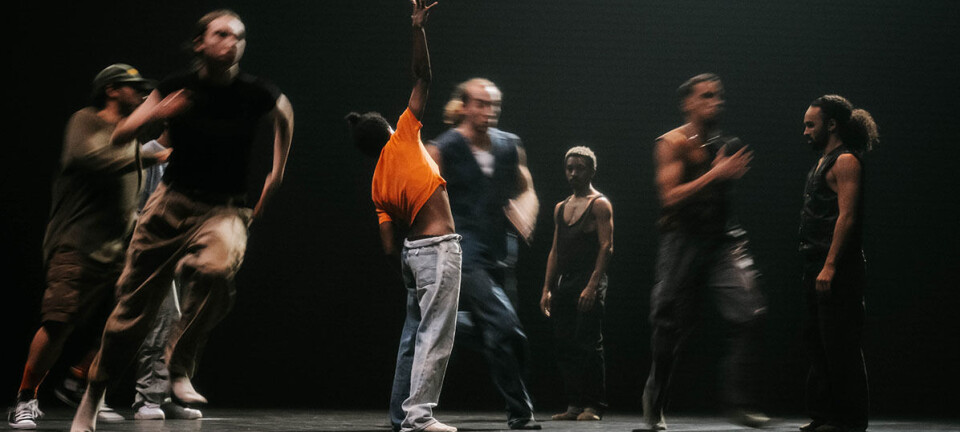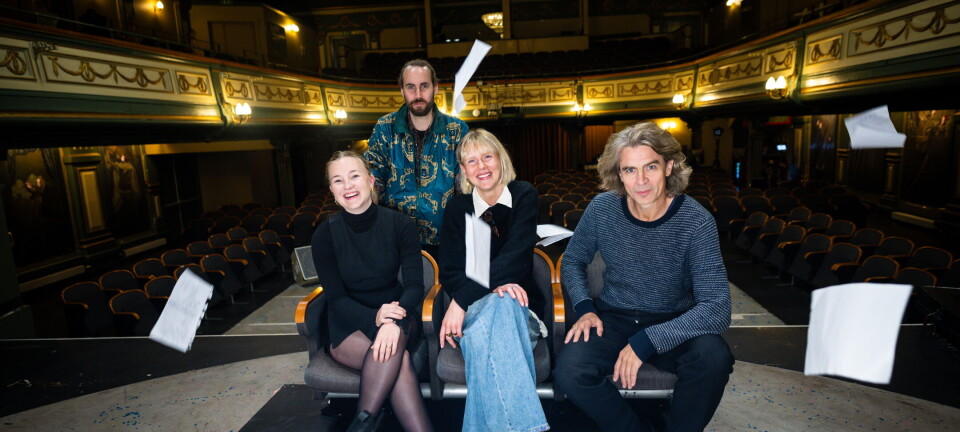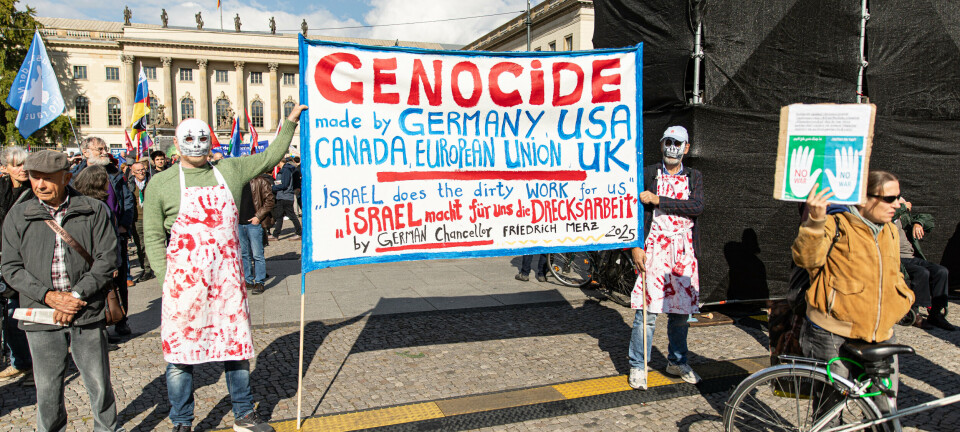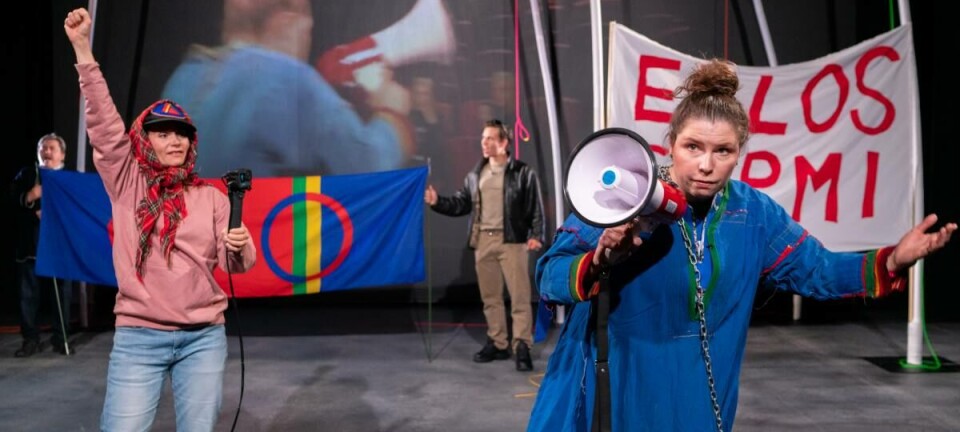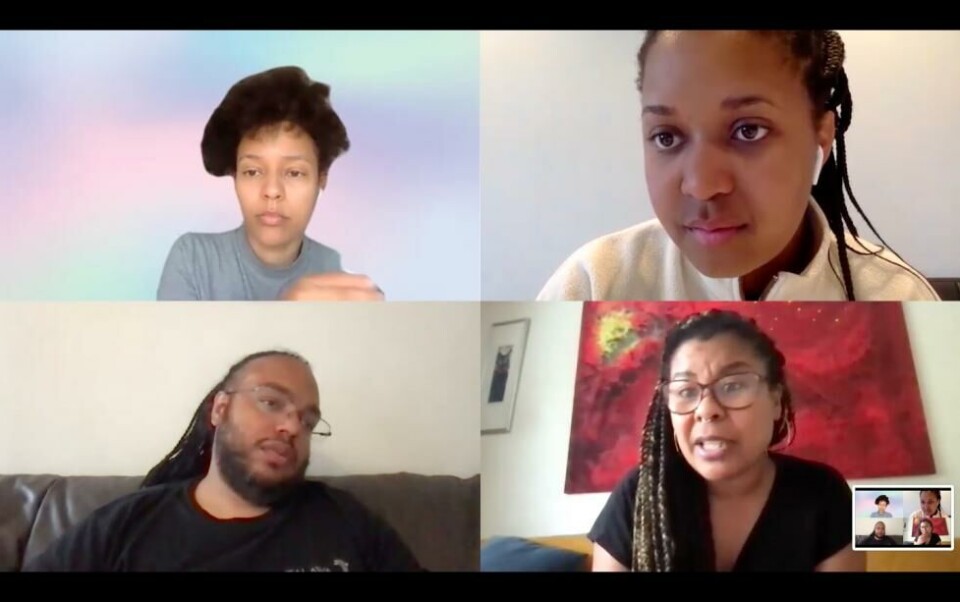
English version: Decolonialism under the Lens
Few words ruffle so many feathers as decolonialism, so a conversation between Nordic scholars on the topic in order to clear the air on the topic was much needed.
«Decoloniality is an ongoing practice of understanding the persistence of coloniality and how it permeates every single level of our Western way of
living, as well as the strive to dismantle and interrupt the Europatriachal epistemy, that dehumanizes Black, Brown and Indigenous bodies and discredits African, Asian and Indigenous knowledges», says Sonya Lindfors, choreographer from Finland and editor of Blackness and the Postmodern (2018). The purpose of decolonialism is not to exclude Western ways of being, as it is so often misunderstood to be, but to challenge the hegemonic position Western knowledge systems assume and impose on others. A decolonized world will entail a kaleidoscopic way of living, where a multitude of perspectives exist on a level playing field, and not with skewed power paradigms that favors white, European and male perspectives.
Global Europe
Deise Nunes, a performance theorist and doctoral student in decolonial performance at the University of Agder, adds additional nuances of defining colonialism as «…the historical project that has been perpetuated in the Americas and the diaspora, and coloniality speaks on the ideas and heritage of this project, and how society has unfolded as consequence of colonialism». Despite the dissolvement of practices such as enslavement, apartheid and colonialism, the legacy of these oppressive systems; the ideologies, thinking and power dynamics, impact our society today, in for instance police brutality, structural racism and discrimination in work and housing market, or as Thomas Prestø, choreographer for Tabanka Dance Ensemble and doctoral student in decolonial performance at the University in South-East Norway, says «Decolonialism is addressing the devastating and ongoing violence that is being perpetuated by what I call «Global Europe», defining the term as the dominance expressed by not only European countries but also their settler colonies, such as Australia and Canada, existing on vastly different continents to Europe but united to it by being white-majority societies. “On an institutional level, to decolonize would be to disrupt the European hegemony and give students access to a multiple of centralities on an equal footing.»
«Kill the Indian, Save The Man”
«Eurocentricity is a violent hegemonic practice of universalism, while other centralities, such as Afrocentricity is pluriversal. Eurocentrism seeks to impose itself on other people, whereas Afrocentricity seeks to be one of many knowledge systems», Prestø continues. Rudyard Kipling’s «The White Man’s Burden (1899) can be read as colonialism’s mission statement, in which the author of the beloved The Jungle Book calls for his white brethren to pick up the mantle of civilizing the savages of the global south and «undiscovered» land. A prime example of this is Christianity, where missionaries played an essential role in exterminating Indigenous language, culture and knowledge, in favor of the Christian doctrine, greatly contributing to it becoming the largest religion in the world. In June of this year, a mass grave of 751 Indigenous children was found under a residential Catholic boarding school in Saskatchewan, Canada, that similarly to assimilation schools in Norway, sought to suppress the Indigenous culture and language of the child and assimilate them into a Western way of being, or as the founder of American residential schools, Richard Pratt said it himself; «Kill the Indian in Him and Save The Man» . These are examples of the skewed power dynamics Eurocentricity is based upon and continually exudes.
In fear of the term being watered down, Nunes stresses the importance of decolonialism entailing structural changes, and not just… «…simply cosmetic changes and performative acts of allyship. Then it is not decoloniality, but tokenism.» These critiques ring true for several other liberation movements that intersect with decoloniality, such as corporations changing their business profile to a rainbow color during Pride, but not being actively inclusive of LGBTIAQ+ people the rest of the year, or the black square that many posted on social media in commemoration of George Floyd, but doing little else to ensure broad ethnic representation in their institutions after this global awakening of racism.
Identity Politics
«Identity politics is not what they claim it is here. Identity politics is Neo-Nazis. Identity politics is Alt-Right. If we are demonstrating for Black Lives Matter, it is a civil rights movement or human rights movement.» Prestø is clear in his answer as to how to define identity politics. Lindfors adds on how identity politics is also used to delegitimize the plight of artistic education to include antiracist work, as it is framed as a political orientation rather than an equality measure. Nunes points out how… «…we are often forced to debate over language, because language is always in dispute. Words and terms are being hijacked to erase the fact that what we are doing is fighting for justice.» Presø brings up the recurring «negerdebatten» in Norway. In discussion with the Police Academy, he has shifted from arguing against the use of the n-word from an antiracist perspective to a professional point of view. «If the mandate of the police is to secure peace and order among its citizenry, how does the word neger support that mandate? Therefore, any police officer using this word is unprofessional. Saying that Picasso was inspired by West-African Art should be a requirement in fine arts education, it is not a decolonial act, but historically accurate. These smaller quarrels discourage us from the bigger picture and challenge that decolonialism is.»
Representation scarcity
Despite people with immigrant parents are heavily represented in higher education in Norway, the recruitment of people with an ethnic minority background to higher arts education is surprisingly low.The dance department at the University of the Arts Helsinki has been predominately white for years on end», Lindfors chimes in. Prestø, who sits at an evaluatory board for Fond for Lyd og Bilde, explains how he was surprised by how his broad network was not reflected among the over 20000 applications. How is it that the arts sector recruit so few persons of minority background? «Norwegians born to immigrant parents grab the available higher educational opportunities” said professor in Sociology at the University of Oslo, Gunn Elisabeth Burkelund, in 2015. Then why are so few choosing the artistic route?
My assumption is that other lines of work have clearer admission processes and higher job security, making them especially attractive to people with minority background who are subjected to work discrimination. Norway was most discriminatory towards Muslim job applicants in a study from 2019. In the Arts, job security is more varied, depending upon less transparent measures such as networking and profiling. This alongside the more subjective criterias for admission and quality pose sstemic challenges that art students of minority background face.
Overworked and underappreciated
Many artists of color experience a discrepancy between the work they do, and the opportunities available to them. «One of the biggest foundations in Finland gave extra corona funding to three white dance companies with only two performances a year for good work, while I watch all these black, brown and indigenous makers who are doing so much in addition to creating art, are exhausted.» From antiracist education following last years #BlackLivesMatter protests, making publications to arranging feminst platforms and calling out arts institutions, many BIPOC artists have been sidelined in application for funding, leading in many instances, to black, brown and indigenous artists doing the antiracist and decolonial work of institutions, and the institutions benefits of this knowledge without having to pay for it, Lindfors continues. Prestø exemplifies this by addressing how the word «melaninrik», that he created as a positively laden word for black, said how the terminology is used without proper accreditation, and how many of the people who are hired fulltime to increase diversity, still tend to represent the dominant society. Many artists of color are therefore caught in a matrix of producing art and knowledge on a temporary or freelance basis, without being compensated for their work or employed on a full time basis. Prestø describes how many artists of color are living on a hamster wheel of constantly having to prove themselves. «As artists of color, we tend to overproduce. If a white artist had produced as much as us, they would have been proclaimed an overachiever», adds Nunes.
Power is in the eyes of the beholder
The lack of diversity among critics has also been highlighted in the most recent years, such as the article The Dominance of the White Male Critic in New York Times by Elizabeth Mendez Berry og Chi-hui Yang in 2019. It highlights the question of whether the critic mass is too homogenous, centering around Western knowledge and art understandings, omitting perspectives of art outside of these paradigms. Earlier this year, a review of Duduzile Mathonsis Bitch Where The Fuck is My Manifesto? by professor in Theatre Studies Knut Ove Arntzen in Norsk Shakespearetidsskrift, sparked strong reactions among artists and critics of color, such as the response from Deise Nunes.
Can art critics engage with art that is developed in an art episteme outside their own? «It depends on competency. If one has an outdated Eurocentric Arts education, then the answer is no. With a high dose of humility, extensive research and positioning of self, it is very possible for a white man to write about art from black, brown and Indigenous, then yes, it can actually open up to new understandings and conceptualizations,» says Prestø. Many artists of color experience their work being oversimplified in critiques, Lindfors tells how her performance Noble Savage was characterized as «messy» by a Finnish art critic, because it used the space differently to what is normative in Western performance. This is part of the devaluing of black creativity, as when it simply differs from the Western norm, is considered lesser than, not a different approach.
From decoloniality in curriculum and identity politics to representation in art criticism - the underlying topics of diversity in the arts field is a minefield. Some of the speakers react to the wide scope of all the perspectives I attempt to address in one article. «This is also part of the problem; when an artist or critic of color arrives in an institution, they have to solve all the problems in one-go. Perhaps the white critics should unpack their own Whiteness?» poses Lindfors. Decolonialism is a project of self-examination for all, as to how one benefits or is disadvantaged by skewed power dynamics. Intersectionality provides a critical lens to see how multiple layers of identity interact. A framework developed by African-American law scholar Kimberlé Crenshaw, it gives us an insight into processes.
Unequal access
«Recently, all positions for the Theatre Studies here in Helsinki, have been made permanent, and there is no Sapmi, Black, Brown, romani or Indigenous representation among the staff. This blocks opportunities for others for years and potentially decades to come.» These institutions will thus lack adequate representation of the diversity in Finland for current and future generations. Rotating positions would help increase the chance of varied perspectives in the arts field, and this was argued by contemporary dancers to gain access to art institutions of power. According to Prestø, what has happened is that «…since a considerable amount have positions in these institutions, they are silent on them being in rotation amongst a small community which further excludes black, brown and indigenous artists».
He elaborates on how the discussion of identity politics, wokeness and other «buzz words» in the arts field, clouds for the true debate - the threat that diversity in the Arts represents. If one were to objectively measure the knowledge and access that many BIPOC artists have, they can in many instances challenge and outperform their white peers, who usually stand on only one epistemic footing. «Deise can produce work in four languages and has access to Norwegian, Portugese and Brazilian artistic practices – she is not rivaled by many white colleagues. Thus, the discussion should not center on antiracism, but simply knowledge bases and professionalism” Prestø concludes.
Even in instances when artists of color are included, if they are not allocated with power to structurally change things, they can become powerless tokens of diversity rather than agents of change. It is not uncommon for activists or critics to be invited in order to silence them, or as Nunes puts it «They invite you in to become loyal to their agenda» . When you once are included in a board or organization, it is expected for you not to critique it as you were part of it. It is a form of silencing of critical voices rather than inclusion. The line between deconstructing power structures and perpetuating them, is very slim.
The way forward
The final question I pose the scholars is that of strategy – what is the way forward for decolonial practices? Is it a slower, more steady reformative approach, in which changes are implemented and integrated over an extended period of time, our radical changes overnight with swapping out the old for the new, cold turkey? Sonya Lindfors challenges the linearity of this question, arguing that it represents a very «…White way of thinking. If we think from a multicentral or pluricentral perspective, both radical and reformative approaches occur at the same time» . Nunes nods in agreement, arguing how decolonial processes occur simultaneously, both locally and globally as well as reformative and radically. It is a process of decolonizing our physical bodies to reconceptualising communities and societies. Prestø addresses the large scope of decolonialism, in which every aspect of the world as you know it, has to be reassessed and reinterrogated. «We have barely scratched the surface of decolonialism in Norway».


